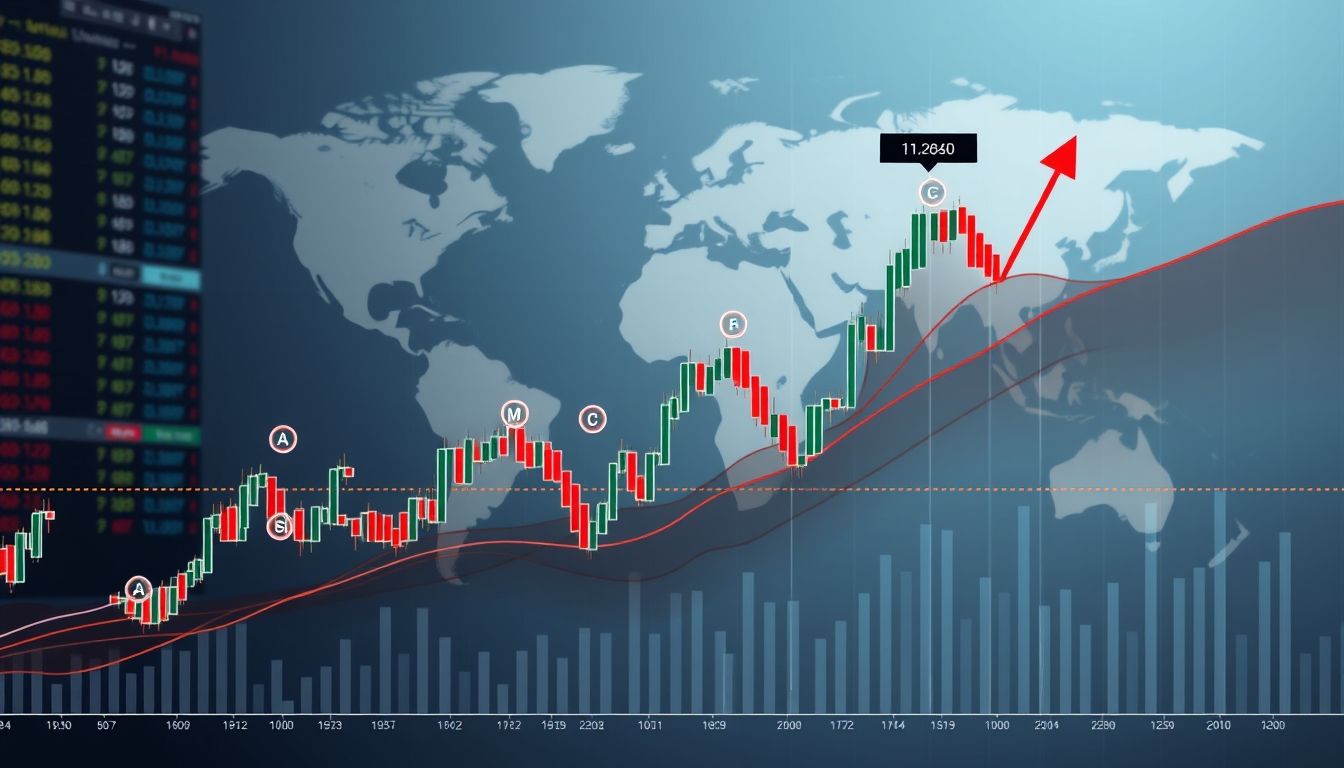Introduction to Elliott Wave Theory
Elliott Wave Theory is a crucial tool for analyzing financial markets, helping traders understand market cycles and predict future trends. Developed in the 1930s by Ralph Nelson Elliott, the theory is based on the idea that markets move in repetitive patterns known as waves.
Chapter 1: Basics of Elliott Wave Theory
1.1 What are Elliott Waves?
Elliott Waves consist of two main patterns: impulse waves and corrective waves. Impulse waves consist of five waves, while corrective waves consist of three waves.
1.2 Impulse Waves
Impulse waves move in the direction of the prevailing trend and consist of five waves numbered 1 to 5. These waves include:
- Wave 1: The beginning of a new trend.
- Wave 2: A correction of Wave 1, usually shallow.
- Wave 3: The strongest wave, exceeding the peak of Wave 1.
- Wave 4: A correction of Wave 3, usually complex.
- Wave 5: The end of the impulse trend, which may be extended or truncated.
1.3 Corrective Waves
Corrective waves move against the prevailing trend and consist of three waves numbered A, B, and C. These waves include:
- Wave A: Correction of the impulse waves.
- Wave B: A temporary rebound.
- Wave C: The end of the correction, usually strong.
Chapter 2: Rules and Guidelines of Elliott Waves
2.1 Basic Rules
There are three basic rules to adhere to when applying Elliott Wave Theory:
- Wave 2 does not exceed the beginning of Wave 1.
- Wave 3 is not the shortest among the impulse waves (1, 3, 5).
- Wave 4 does not overlap the area of Wave 1.
2.2 Important Guidelines
In addition to the rules, there are some guidelines that help identify waves correctly:
- Wave 3 is often the longest and strongest.
- Wave 5 may be extended or truncated.
- Corrective waves are often complex and take various forms such as zigzags, flats, and triangles.
Chapter 3: Fibonacci Ratios in Elliott Waves
3.1 Using Fibonacci Ratios
Fibonacci ratios are a powerful tool for identifying potential support and resistance levels in Elliott Waves. Important ratios include:
- 38.2%, 50%, 61.8%: Potential correction levels for waves.
- 161.8%, 261.8%: Potential extension levels for waves.
3.2 Applying Fibonacci Ratios to Impulse Waves
Fibonacci ratios can be used to determine the targets of impulse waves. For example, Wave 3 can be expected to extend by 161.8% of the length of Wave 1.
3.3 Applying Fibonacci Ratios to Corrective Waves
Fibonacci ratios can be used to determine potential correction levels. For example, Wave 2 can be expected to correct by 38.2% or 50% of the length of Wave 1.
Chapter 4: Corrective Wave Patterns
4.1 Zigzag
A zigzag consists of three waves (A-B-C) where Wave B is lower than the beginning of Wave A.
4.2 Flat
A flat consists of three waves (A-B-C) where Wave B is close to the beginning of Wave A.
4.3 Triangles
Triangles consist of five waves (A-B-C-D-E) and are characterized by a shrinking price range.
Chapter 5: Identifying Waves on Charts
5.1 Analyzing Charts
Identifying waves on charts requires practice and experience. Look for recurring patterns and apply the rules and guidelines.
5.2 Using Technical Indicators
Technical indicators such as moving averages, Relative Strength Index (RSI), and MACD can be used to confirm wave analysis.
Chapter 6: Trading Strategies Using Elliott Waves
6.1 Entry and Exit Strategy
Elliott Waves can be used to identify ideal entry and exit points. For example, you can enter a buy trade at the beginning of Wave 3 and exit at the end of Wave 5.
6.2 Risk Management
Risk management is a vital part of any trading strategy. Stop-loss and take-profit levels should be set based on wave analysis.
Chapter 7: Practical Examples from the Arab Market
7.1 Analyzing Saudi Aramco Stock
An example of how to apply Elliott Wave Theory to Saudi Aramco stock to identify future trends.
7.2 Analyzing the Saudi General Index (TASI)
Wave analysis of the Saudi General Index to identify potential support and resistance levels.
Chapter 8: Practical Examples from Global Markets
8.1 Analyzing the S&P 500 Index
Wave analysis of the S&P 500 index to identify future trends in the US market.
8.2 Analyzing the EUR/USD Currency Pair
Wave analysis of the EUR/USD currency pair to identify potential trading opportunities.
Chapter 9: Common Mistakes in Applying Elliott Wave Theory
9.1 Misinterpreting Waves
One common mistake is misinterpreting waves due to failure to adhere to the rules and guidelines.
9.2 Ignoring Risk Management
Ignoring risk management can lead to significant losses. Always set stop-loss and take-profit levels.
Chapter 10: Tips for Improving Trading Skills Using Elliott Waves
10.1 Continuous Practice
Continuous practice is key to improving trading skills using Elliott Waves. Analyze charts regularly and apply different strategies.
10.2 Learning from Experts
You can benefit from the experience of professional traders by attending training courses and reading books and articles.
Disclaimer: This article is for educational purposes only and does not constitute investment advice.



